Abstract
The author reviews the growth of the insecticide-resistance problem throughout the world during the period between July 1956 and November 1957, and the developments in research on the subject during the same period.
Three new resistant species have been discovered—Anopheles subpictus, Chrysomyia putoria and Rhipicephalus sanguineus—and eight new types of resistance in already resistant species have been observed. Moreover, the geographical area covered by certain resistant insect populations has considerably increased.
The research accomplishments during the period under review include: systems of detecting resistance in the field by standard test methods; confirmation of two distinct types of resistance to chlorinated-hydrocarbon insecticides in mosquitos and bed-bugs as well as in houseflies; evidence that DDT-resistance in the housefly, Anopheles sundaicus and Aëdes aegypti is due mainly to a single genetic factor associated with the ability to dehydrochlorinate DDT, and that dieldrin-resistance of Anopheles gambiae also derives from a single factor present even in untouched populations; a fuller understanding of the physiological mechanism of BHC-resistance in the housefly; and demonstration that selection pressure from organo-phosphorus compounds induces resistance to themselves and to chlorinated-hydrocarbon insecticides.
Full text
PDF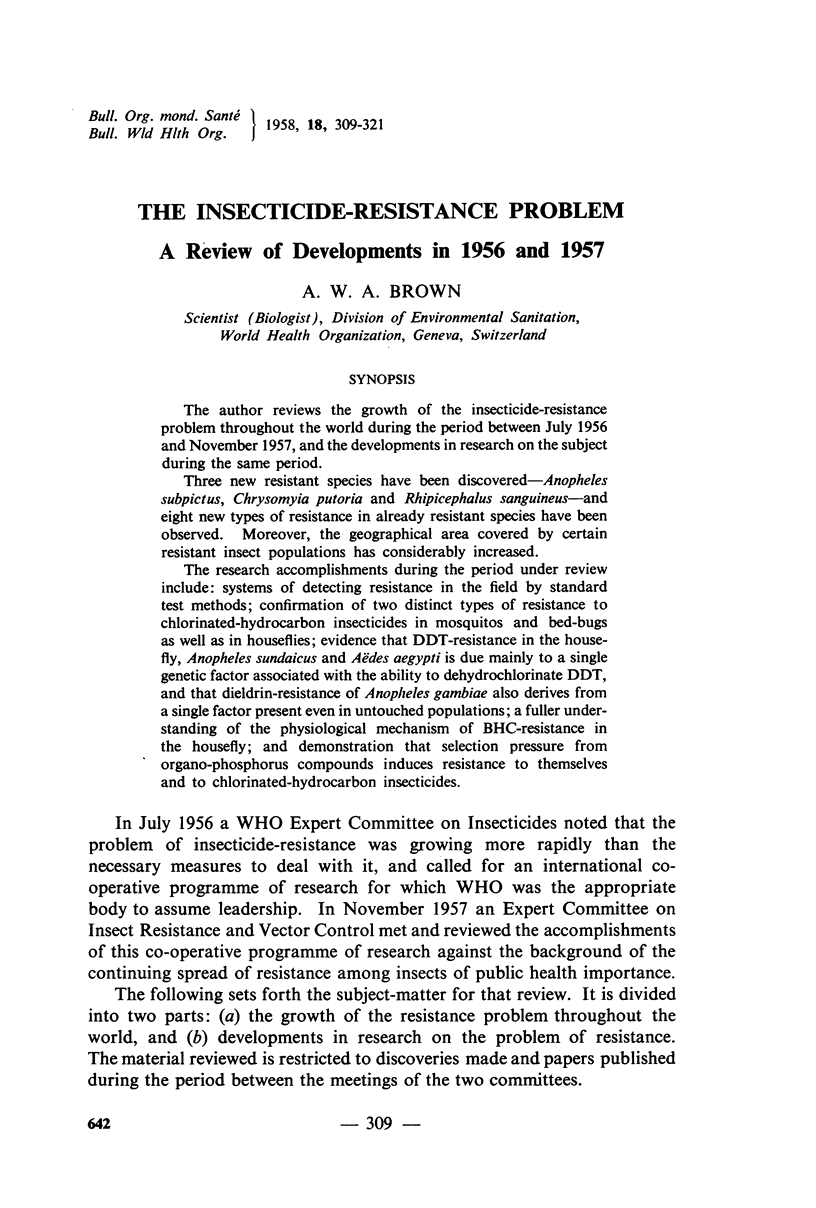
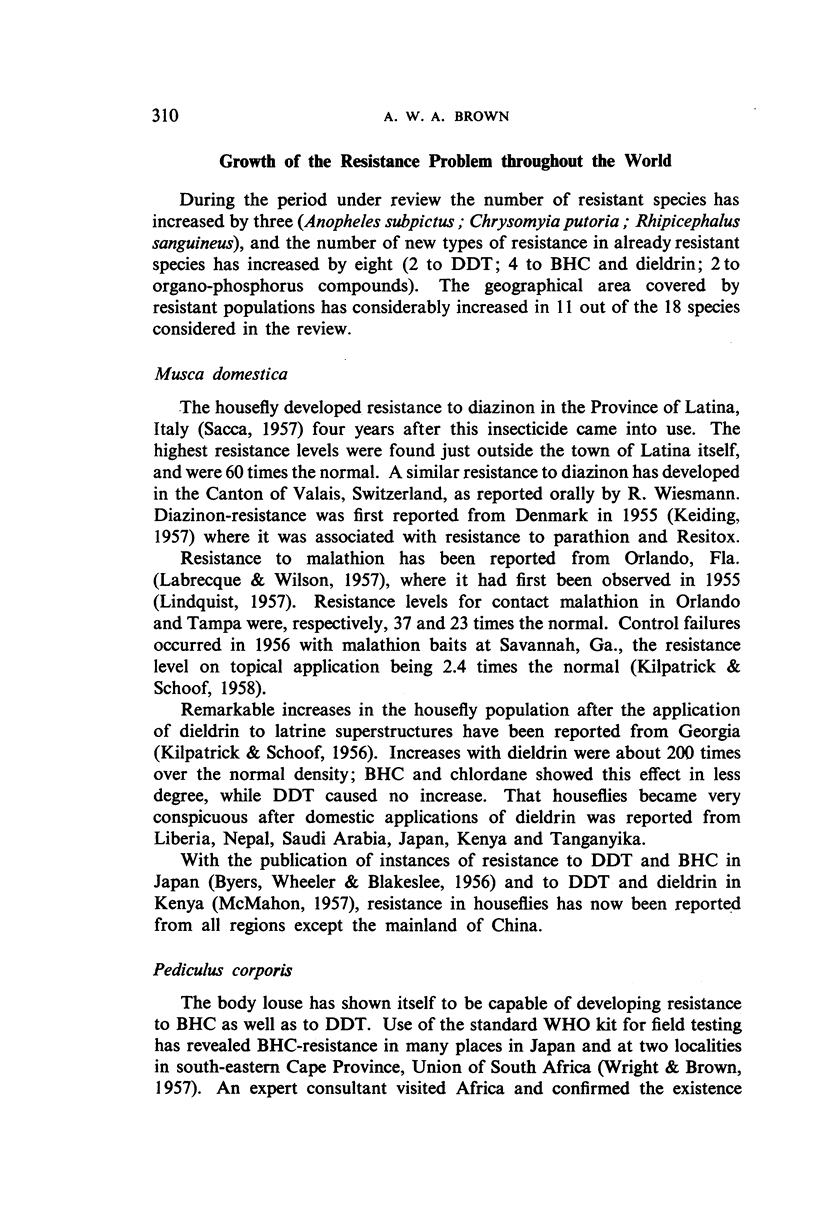
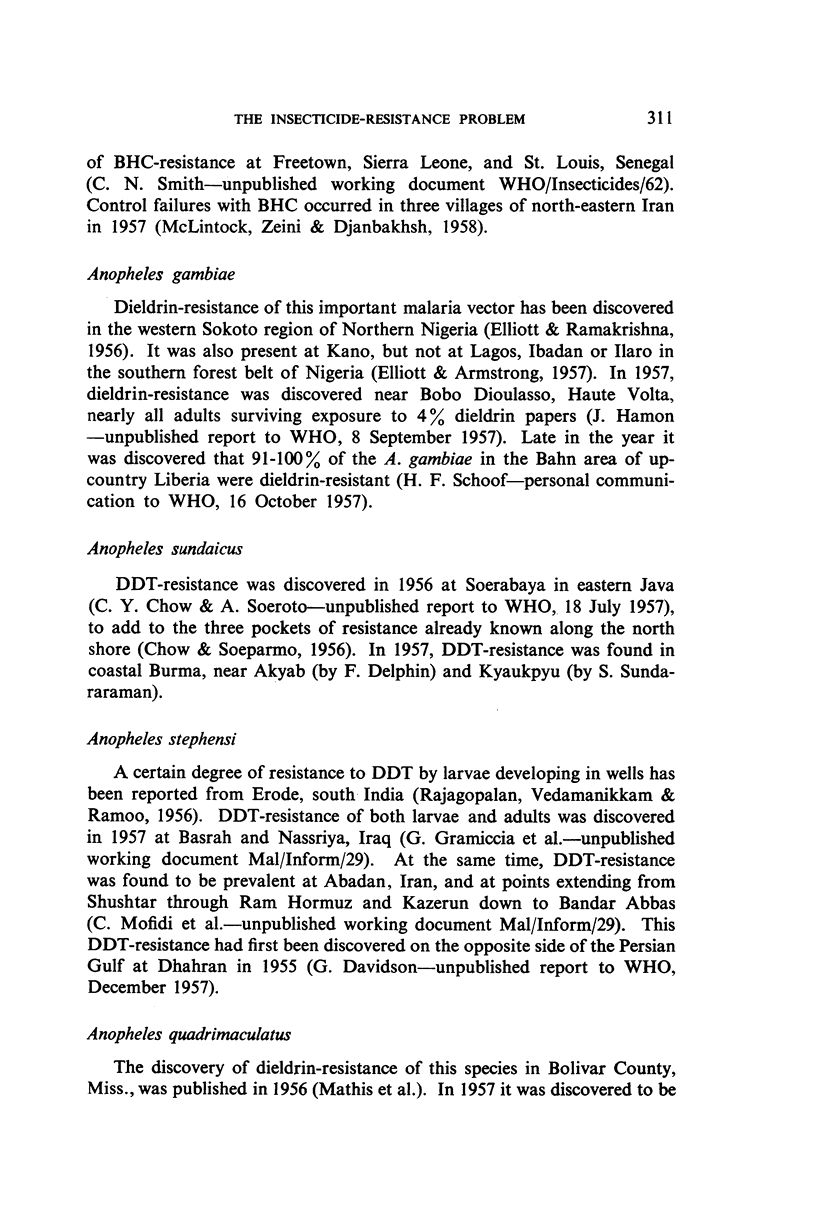
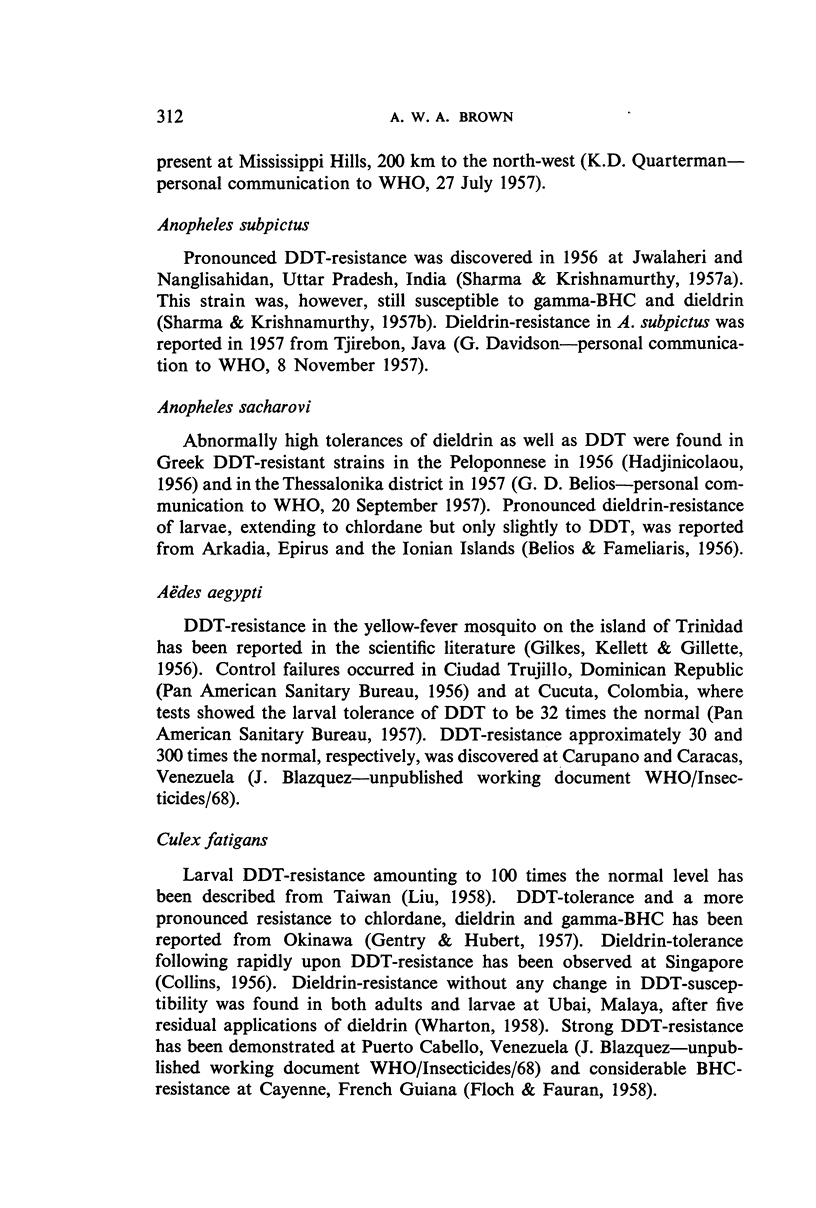
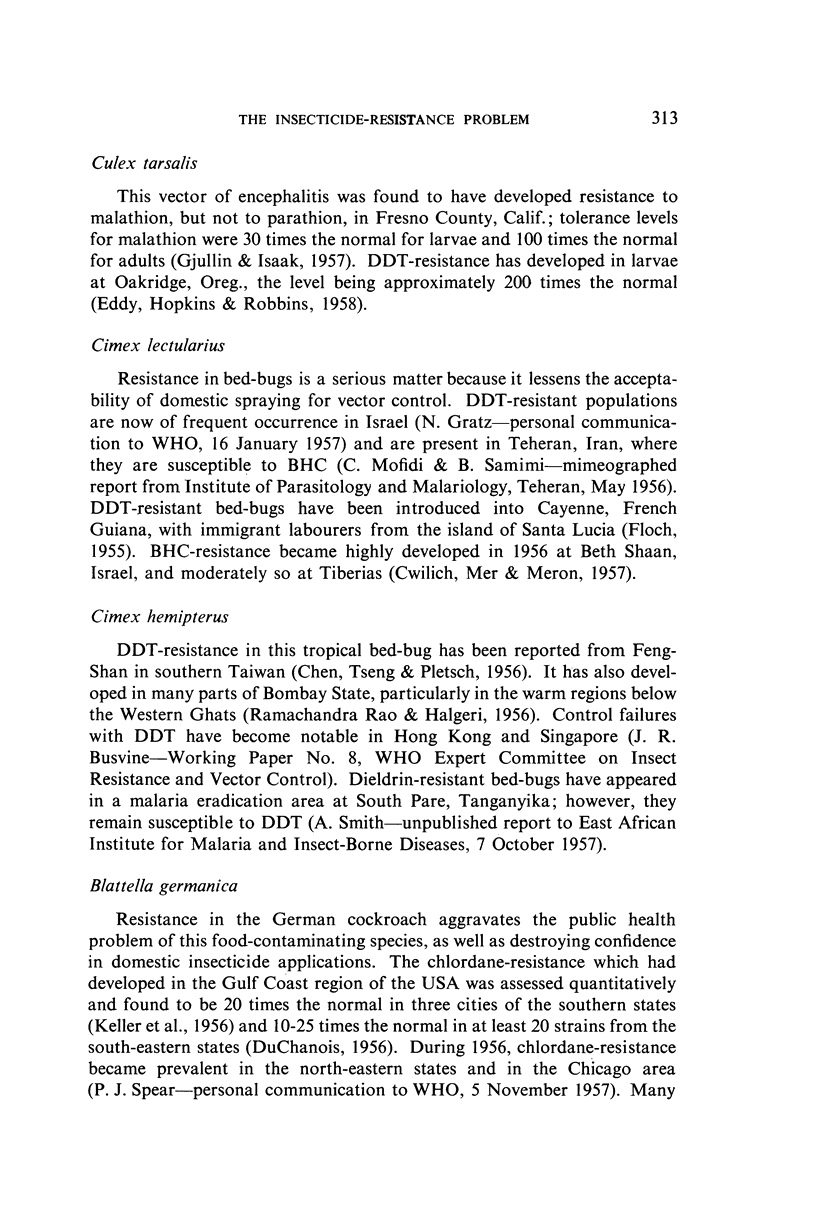
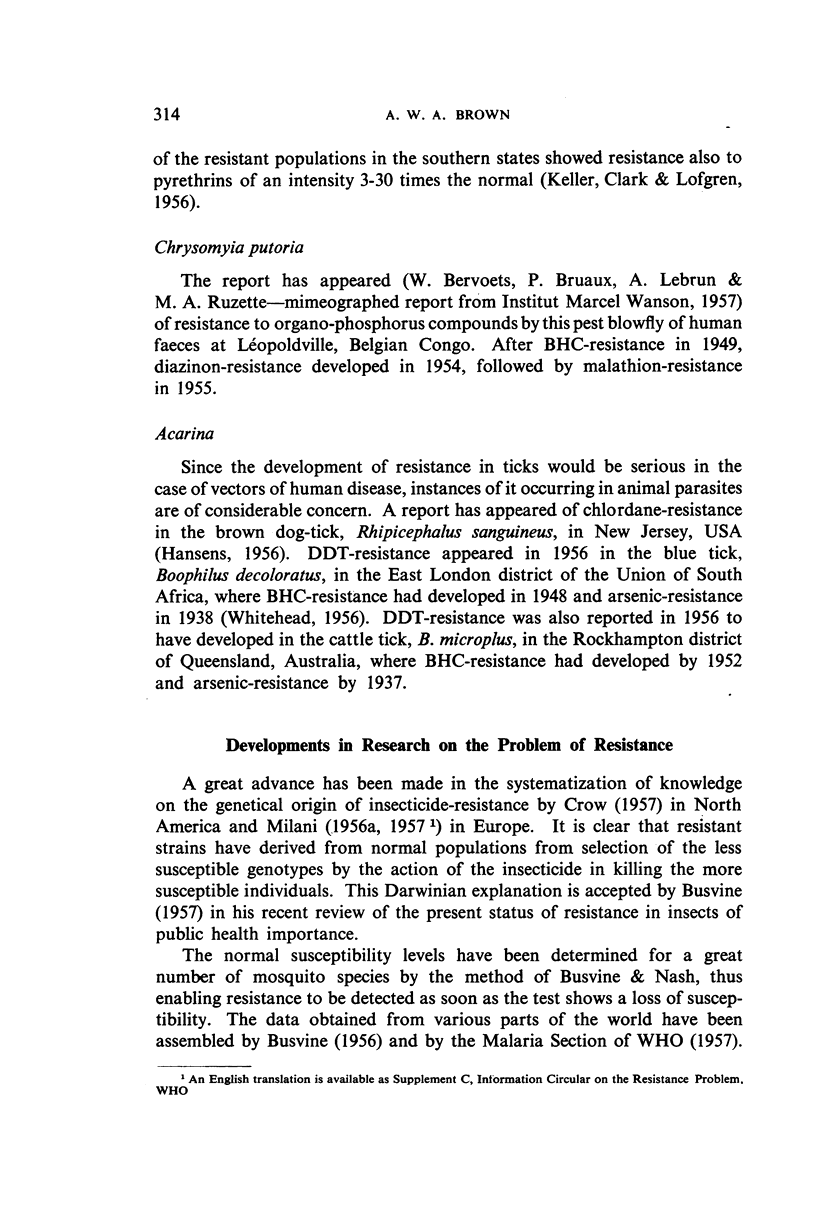
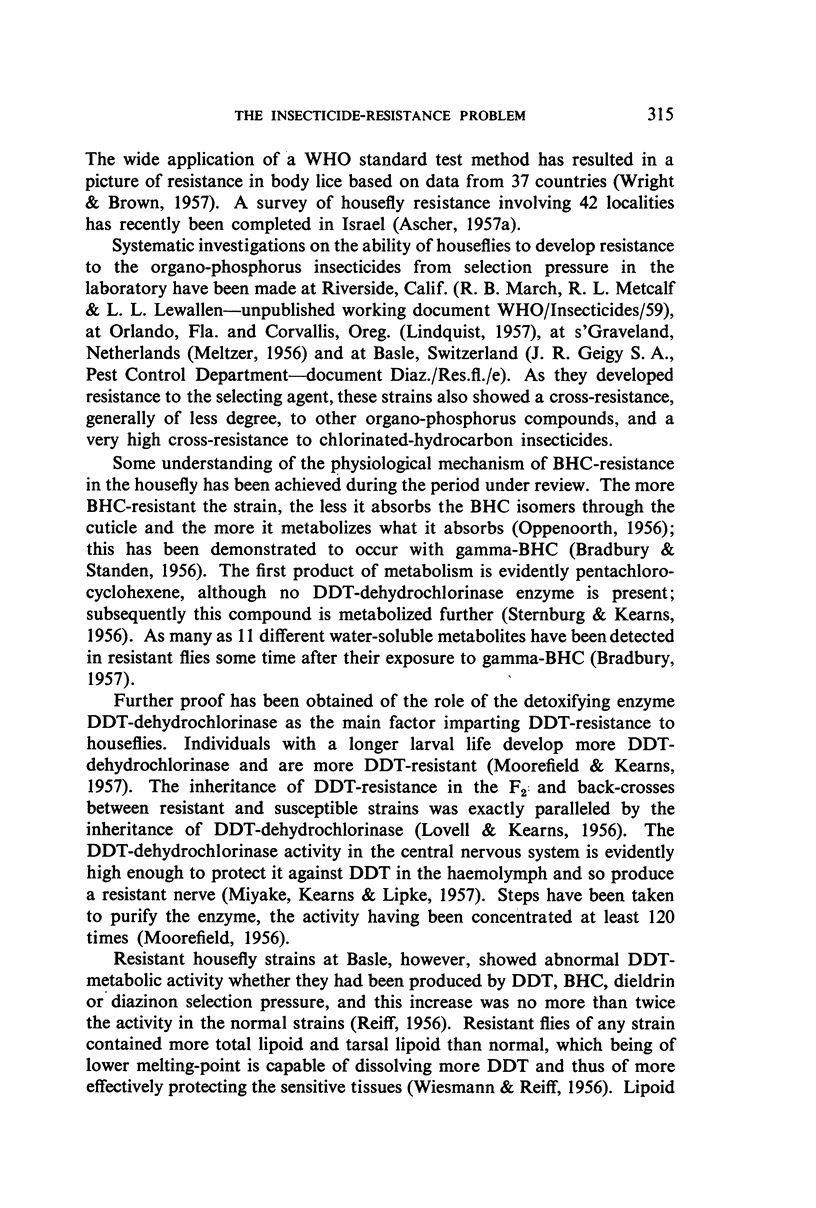
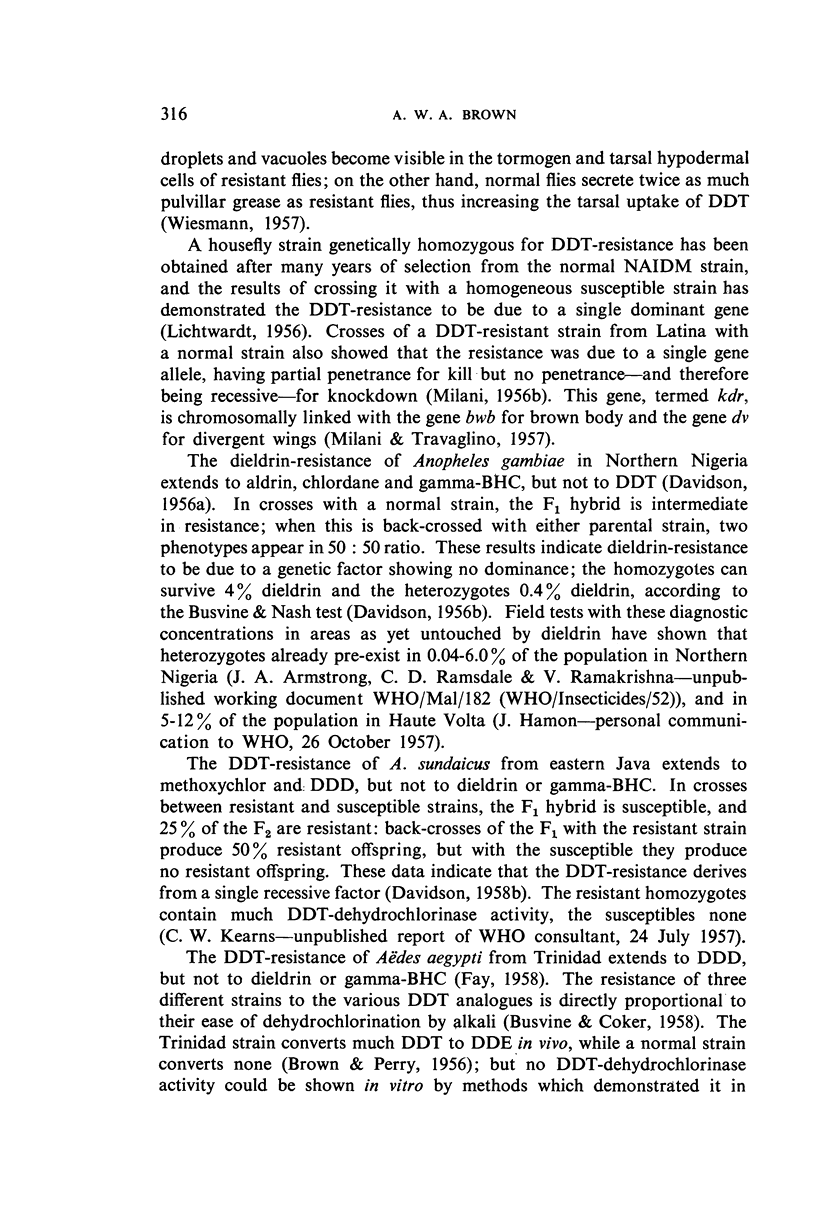
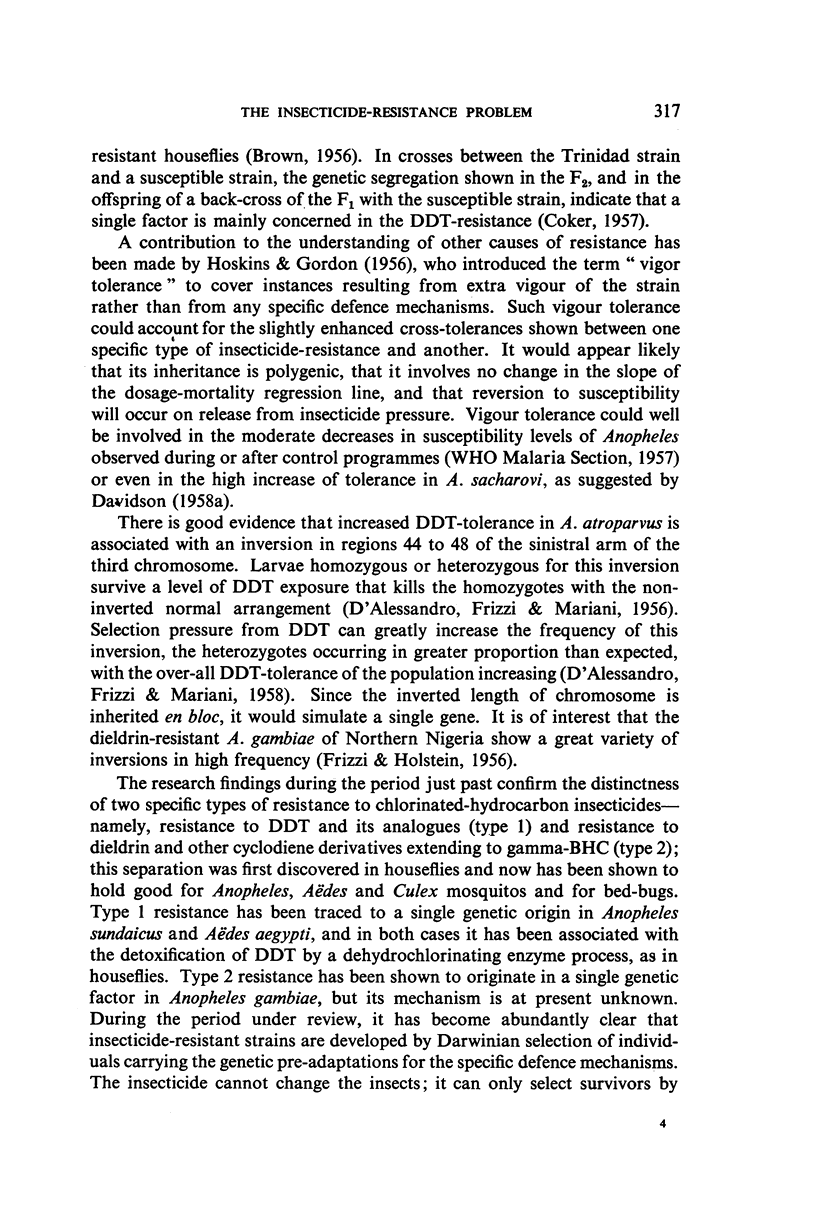
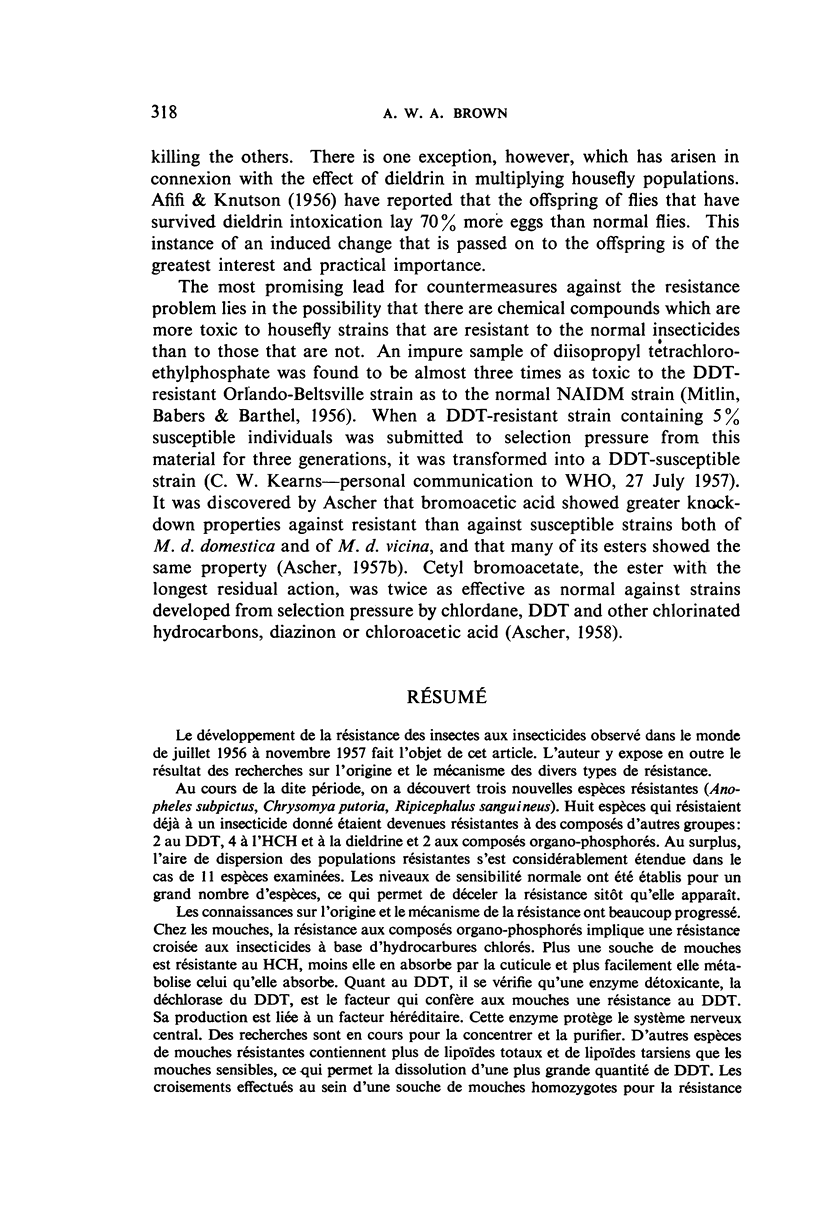
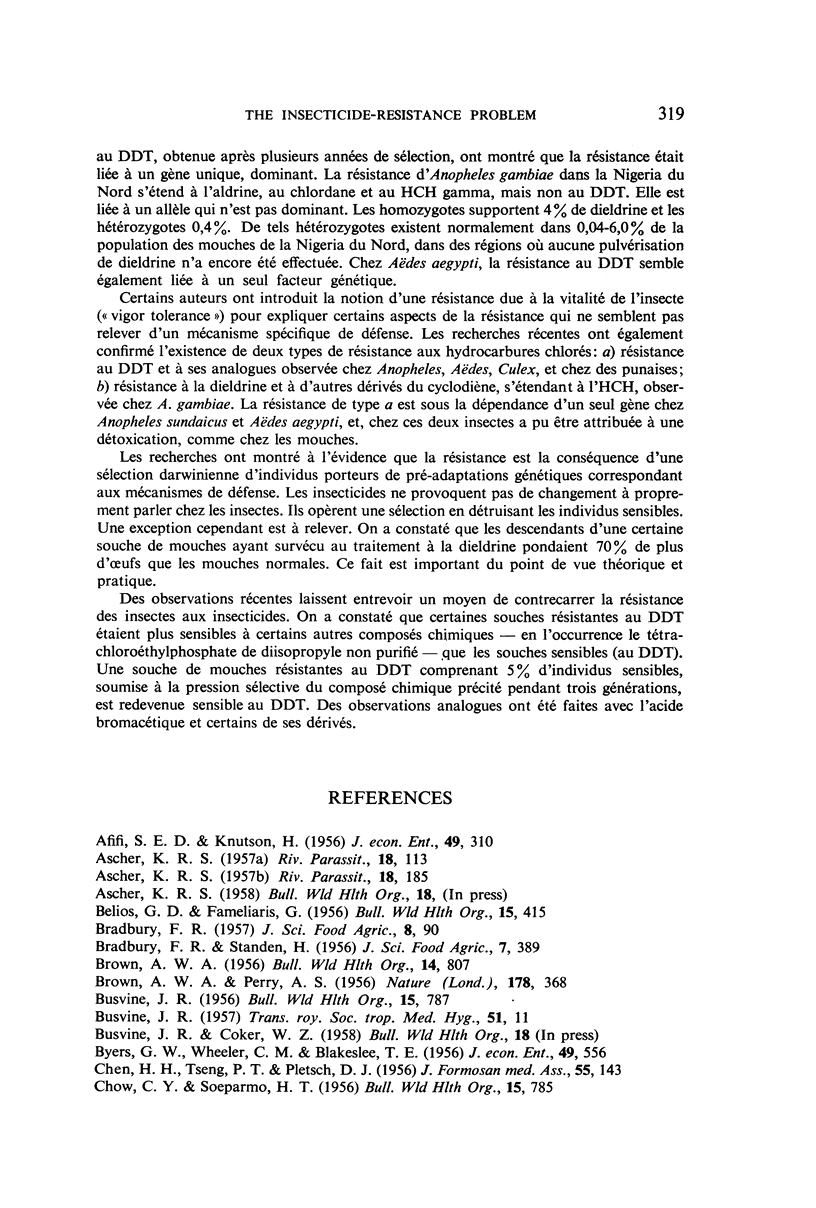
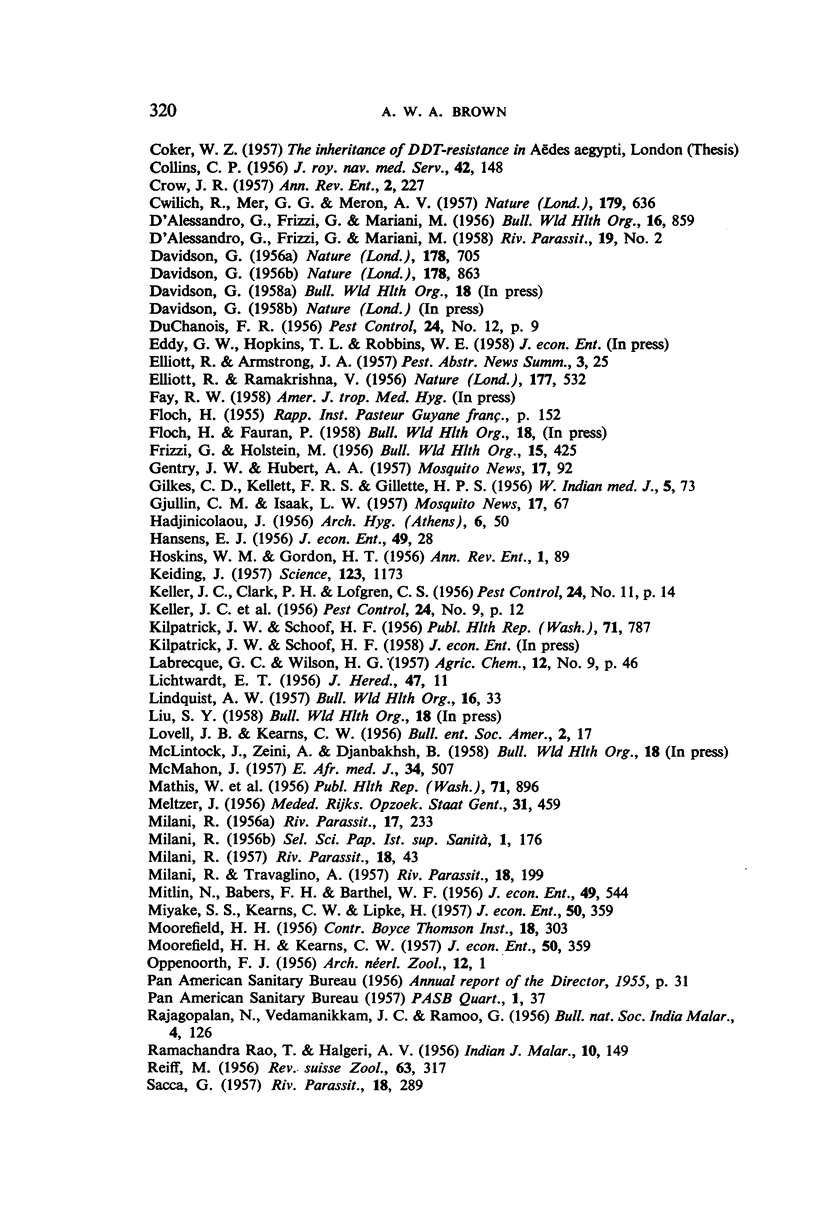
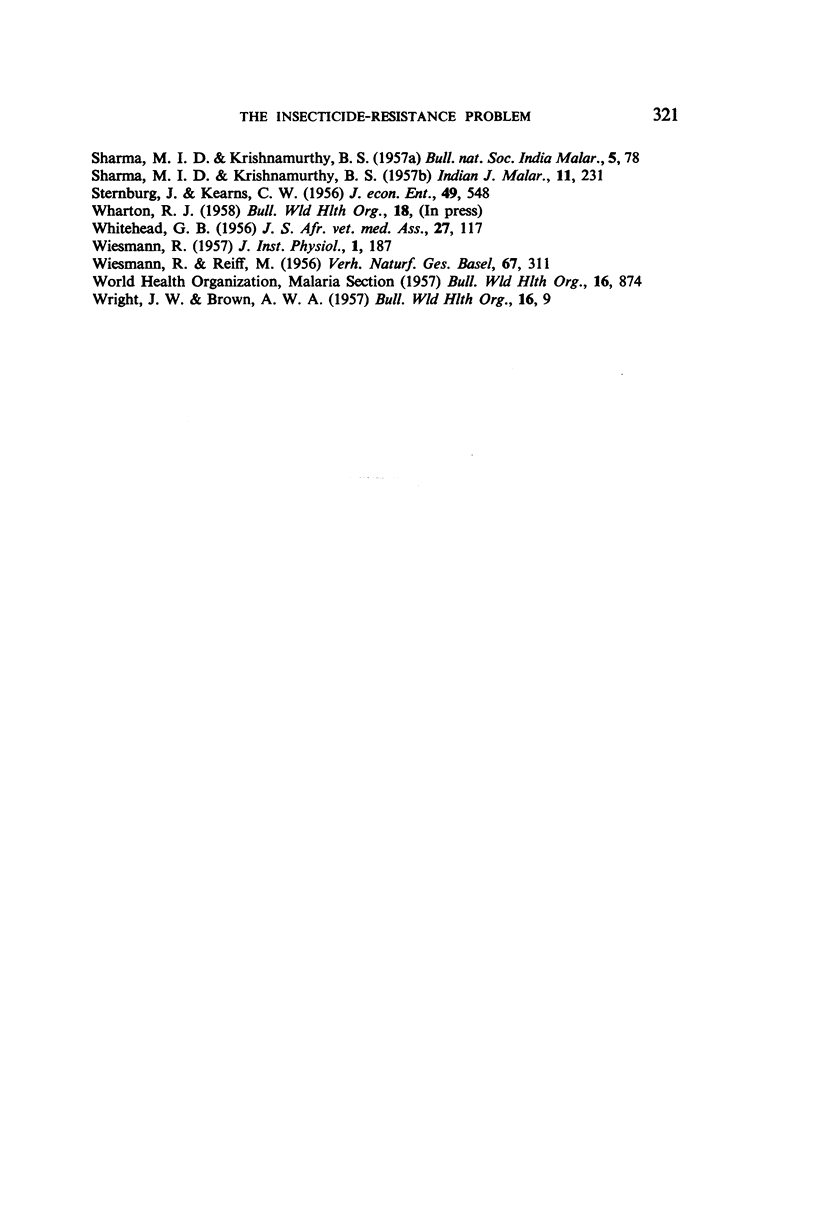
Selected References
These references are in PubMed. This may not be the complete list of references from this article.
- BELIOS G. D., FAMELIARIS G. Resistance of anopheline larvae to chlordane and dieldrin; field and laboratory tests on Anopheles sacharovi. Bull World Health Organ. 1956;15(3-5):415–423. [PMC free article] [PubMed] [Google Scholar]
- BROWN A. W., PERRY A. S. Dehydrochlorination of DDT by resistant houseflies and mosquitoes. Nature. 1956 Aug 18;178(4529):368–369. doi: 10.1038/178368b0. [DOI] [PubMed] [Google Scholar]
- BUSVINE J. R. A survey of measurements of the susceptibility of different mosquitos to insecticides. Bull World Health Organ. 1956;15(3-5):787–791. [PMC free article] [PubMed] [Google Scholar]
- BUSVINE J. R. Insecticide-resistant strains of insects of public health importance. Trans R Soc Trop Med Hyg. 1957 Jan;51(1):11-31; discussion, 32-6. doi: 10.1016/0035-9203(57)90002-0. [DOI] [PubMed] [Google Scholar]
- CHOW C. Y., SOEPARMO H. T. DDT-resistance of Anopheles sundaicus in Java. Bull World Health Organ. 1956;15(3-5):785–786. [PMC free article] [PubMed] [Google Scholar]
- COLLINS C. P. Experiments in larvae control in H. M. Naval Base, Singapore. J R Nav Med Serv. 1956;42(4):148–166. [PubMed] [Google Scholar]
- CWILICH R., MER G. G., MERON A. V. Bedbugs resistant to gamma-BHC (lindane) in Israel. Nature. 1957 Mar 23;179(4560):636–637. doi: 10.1038/179636a0. [DOI] [PubMed] [Google Scholar]
- D'ALESSANDRO G., LAZZARO G. F., MARIANI M. Effect of DDT selection pressure on the frequency of chromosomal structures in Anopheles atroparvus. Bull World Health Organ. 1957;16(4):859–864. [PMC free article] [PubMed] [Google Scholar]
- DAVIDSON G. Insecticide resistance in Anopheles gambiae Giles: a case of simple mendelian inheritance. Nature. 1956 Oct 20;178(4538):863–864. doi: 10.1038/178863a0. [DOI] [PubMed] [Google Scholar]
- DAVIDSON G. Insecticide resistance in Anopheles gambiae giles. Nature. 1956 Sep 29;178(4535):705–706. doi: 10.1038/178705a0. [DOI] [PubMed] [Google Scholar]
- ELLIOTT R., RAMAKRISHNA V. Insecticide resistance in Anopheles gambiae Giles. Nature. 1956 Mar 17;177(4507):532–533. doi: 10.1038/177532a0. [DOI] [PubMed] [Google Scholar]
- FRIZZI G., HOLSTEIN M. Etude cytogénétique d'Anopheles gambiae. Bull World Health Organ. 1956;15(3-5):425–435. [PMC free article] [PubMed] [Google Scholar]
- GILKES C. D., GILLETTE H. P., KELLETT F. R. Yellow fever in Trinidad and the development of resistance in Aedes aegypti Linn, to D.D.T. formulations. West Indian Med J. 1956 Jun;5(2):73–89. [PubMed] [Google Scholar]
- HALGERI A. V., RAO T. R. A note on resistance of bed bugs to DDT in Bombay State. Indian J Malariol. 1956 Jun;10(2):149–154. [PubMed] [Google Scholar]
- KEIDING J. Resistance to organic phosphorus insecticides of the housefly. Science. 1956 Jun 29;123(3209):1173–1174. doi: 10.1126/science.123.3209.1173. [DOI] [PubMed] [Google Scholar]
- KILPATRICK J. W., SCHOOF H. F. Fly production in treated and untreated privies. Public Health Rep. 1956 Aug;71(8):787–796. [PMC free article] [PubMed] [Google Scholar]


